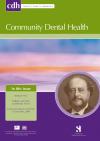Community Dental Health

- Cover Date:
- September 2013
- Print ISSN:
- 0265 539X
- Vol:
- 30
- Issue:
- 3
The geographic distribution of patients seeking emergency dental care at the Royal Dental Hospital of Melbourne, Australia
doi:10.1922/CDH_3124Kruger06
Background: Little detail is known about the geographical catchment areas covered by dental hospitals, with no previous Australian studies of this kind. The aim of this study was to assess the geographical distribution of public dental emergency patients and their socioeconomic status to define catchment zones for a dental hospital. Methods: All patients requesting emergency dental care at the Royal Dental Hospital Melbourne, meeting the inclusion criteria, in calendar years 2006 and 2010 were included in the sample. Geographic information systems tools were used to locate and link each patient address to the socioeconomic data. Results: For both 2006 and 2010 95% of the patients were living within 50km of the hospital. In 2006, most of the patients seeking care lived within a 15km radius of the dental hospital whilst in 2010 that distance increased somewhat. Patients from areas with similar socioeconomic status living more than 10km away from the hospital had poorer access to dental emergency treatment. Conclusions: The hospital had a surprisingly large catchment zone that overlapped those of smaller community-based clinics.
Key words: density mapping, geographic information systems, GIS, health service mapping, geographic mapping, metropolitan hospitals
- Article Price
- £15.00
- Institution Article Price
- £
- Page Start
- 149
- Page End
- 154
- Authors
- C.M. Rocha, E. Kruger, S. McGuire, M. Tennant
Articles from this issue
- Title
- Pg. Start
- Pg. End
- Dental Public Health in Action - Oral health education and disease prevention in primary dental care: Insight from a pilot intervention targeting children aged 0-7 years in northeast England
- 134
- 137
- Longitudinal register study of attendance frequencies in public and private dental services in Finland
- 143
- 148
- The geographic distribution of patients seeking emergency dental care at the Royal Dental Hospital of Melbourne, Australia
- 149
- 154
- Oral health care services utilisation in the adult US population: Medical Expenditure Panel Survey 2006
- 161
- 167
- Dental infections increase the likelihood of hospital admissions among adult patients with sickle cell disease
- 168
- 172
- Child oral health-related quality of life (COHQoL), enamel defects of the first permanent molars and caries experience among children in Western Australia
- 183
- 188
- Oral health-related quality of life in non-syndromic cleft lip and/or palate patients: a systematic review
- 189
- 195
